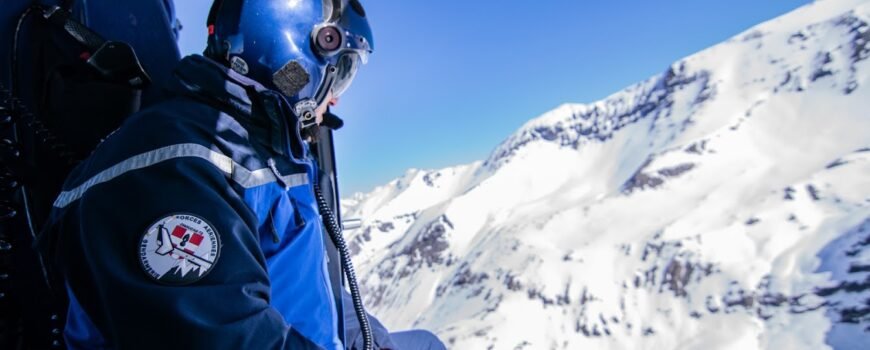Who are they ?
the Intervention platoon of the National Gendarmerie in High Mountain (PGHM) was created in 1958 following a serious accident on Mont Blanc. The high mountain gendarme is both a military, a mountaineer hardened, a rescuer most also a investigator.
Today we count 16 PGHM spread across the Alps, the Pyrenees, Corsica and Reunion. There is also 5 Pelotons of Hor Montagne (PHM) across France, in the Vosges, the Jura and the Massif Central.
Note: we must distinguish between a mountain policeman and a high mountain policeman. The first works within a territorial mountain brigade or a mobile gendarmerie squadron without having followed specific training. While the second is specialized in delicate and dangerous interventions in high mountains.
PGHM’s missions
As part of its missions, the Intervention Platoon of the National Gendarmerie in High Mountain is required to practice skiing, climbing and mountaineering in order to intervene in situationsdelicate and dangerous ions in high mountains. When the gendarme is part of a PGHM, he performs different types of actions such as people search missing, the secours and theassistance to people in difficulty, but also the regulatory control in order to ensure compliance with specific mountain legislation.
For these different missions, he works in collaboration with others specialized gendarmes like helicopter pilots, from dog handlers and doctors.
In order to always be ready for carry out all of their operations, these special gendarmesss train regularly for maintain good physical and athletic condition. Representing and simulating accidents is also a good way to prepare for them to all types of missions and to have a good knowledge of their place of iintervention: the mountain.
Mountain training
It is made up of three levels: the elementary training, the qualification training and la specialty.
The first allows to integrate a mountain group gendarmerie (WYD). In order to get this Ccertified IT’Selementary from Montagne (CEM), you will first need to complete two weeks of training in summer and in winter.
The qualification training, meanwhile, consists of six weeks in summer, two weeks in autumn and five weeks in winter. It gives, to its holder, the right to supervise soldiers called upon to carry out missions, training and the gendarmerie in mountainous areas.
As for specialization, it isorganizes in two stages, the selection tests and theobtaining mountain specialist’s certificate
If you also want to integrate a PGHM, it takes everythingon board pass the competition gendarmerie non-commissioned officer. Following this, selection tests take place in Chamonix in National Center for Ski and Mountaineering Instruction of the Gendarmerie (CNISAG). These tests consist to do a timed cross-country race, downhill skiing, off-piste, a climbing course on an artificial wall and looking forr a avalanche victim within a time limit.

